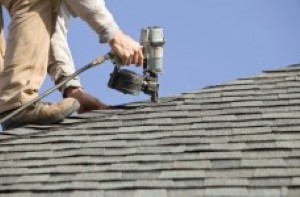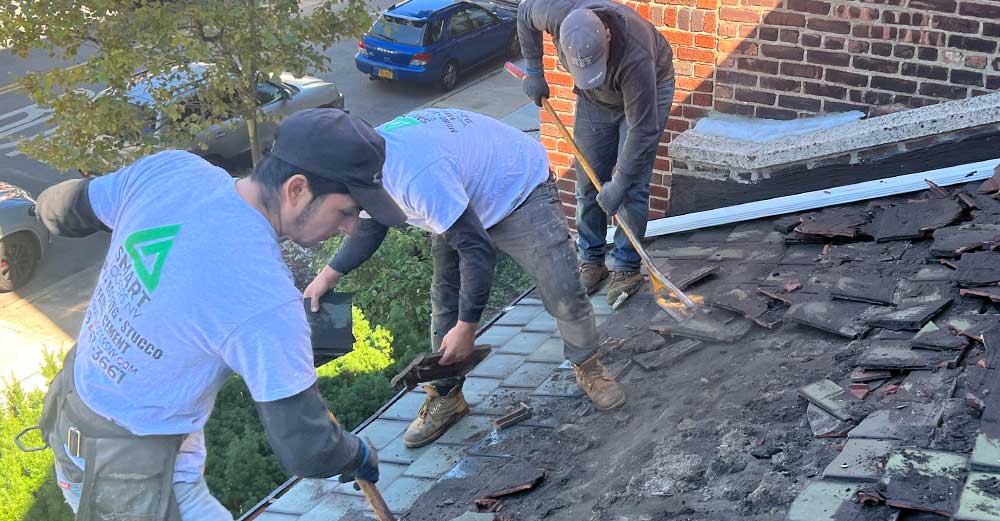Recognizing the Different Kinds Of Roof Coverings: A Comprehensive Overview for Homeowners
With a selection of alternatives-- ranging from the standard gable to the modern level-- each type presents unique benefits and challenges that must line up with the house owner's ecological factors to consider and specific requirements. As we check out the intricacies of numerous roofing system types, it comes to be noticeable that one dimension does not fit all; the ideal choice may amaze you.
Gable Roof Coverings
Gable roofings, characterized by their triangular shape, are amongst the most popular roofing styles as a result of their simpleness and performance in dropping water and snow. This style features 2 sloping sides that fulfill at a ridge, permitting efficient water drainage and decreasing the risk of water build-up. The steep pitch commonly connected with gable roofings improves their ability to handle heavy rainfall, making them appropriate for different climates.
Along with their useful advantages, gable roof coverings offer visual versatility. They can be adjusted to different building styles, from typical to modern-day homes. The style can also suit added attributes such as dormer home windows, which enhance natural light and air flow in the attic room room.
In addition, saddleback roofs offer adequate area for insulation, adding to energy efficiency. Home owners can select from a range of roof covering products, consisting of asphalt shingles, metal, and floor tiles, better enhancing modification choices.
Regardless of their benefits, saddleback roofs might call for extra assistance in areas susceptible to high winds or hefty snowfall. Generally, the gable roof covering remains a popular option as a result of its blend of capability, durability, and aesthetic appeal.
Flat Roofs
Level roofs are typically identified for their minimalist style and sensible applications, particularly in industrial and industrial settings (oahu roofing). These roof coverings feature a almost straight or straight surface, which enables for simple building and flexible area utilization. While they may do not have the visual appeal of angled roofs, level roof coverings use various benefits, specifically in metropolitan atmospheres where taking full advantage of area is crucial
One of the key advantages of flat roofs is their accessibility. Property owners can make use of the roof space for numerous purposes, such as roof gardens, balconies, or solar panel installments. Additionally, level roofings are usually more economical to install and preserve compared to their sloped counterparts, as they require less products and labor.
Typical materials used for level roofing systems include built-up roofing (BUR), modified asphalt, and single-ply membrane layers, each offering distinctive advantages. On the whole, level roof coverings serve as a practical and versatile option for several home owners and organizations alike.
Hip Roofings
Hip roof coverings are characterized by their sloped sides that assemble at the top, forming a ridge. This layout stands out from gable roofs, as all four sides of a hip roofing system slope downwards toward the walls, providing a more secure structure. The angle of the inclines can differ, permitting for flexibility in architectural aesthetic appeals and performance.
Among the key advantages of hip roof coverings is their ability to withstand hefty winds and damaging weather condition conditions. The sloped surface areas enable much better water drain, decreasing the danger of leaks and water damages. Furthermore, hip roofs offer raised attic room area, which can be made use of for storage or also exchanged habitable locations.
However, constructing a hip roofing can be a lot more pricey and intricate than easier roofing kinds, such as gable roof coverings. The added material and labor included in developing the slopes and making certain appropriate structural stability can lead to higher expenses. Despite these drawbacks, numerous homeowners prefer hip roofings for their durability, aesthetic appeal, and possibility for power efficiency.
Mansard Roofing Systems
Mansard roofs, commonly acknowledged by their one-of-a-kind four-sided layout, attribute 2 slopes on each side, with the reduced slope being steeper than the upper. This architectural style, stemming from France in the 17th century, is not just aesthetically appealing but useful, as it optimizes the functional room in the top floors of a building. The high lower slope permits for even more clearance, making it a perfect choice for loft spaces or attics, which can be transformed into living areas.
Mansard roof coverings are characterized by their flexibility, accommodating various architectural styles, from conventional to modern-day. They can be created with various products, including asphalt shingles, slate, or steel, giving property owners with a range of options to suit their budgets and choices. Additionally, the layout enables the assimilation of dormer windows, enhancing all-natural light and air flow in the upper degrees.
However, it is necessary to consider the possible drawbacks. Mansard roof click now coverings may need browse this site more maintenance because of the intricacy of their style, and their steep inclines can be challenging for snow and rainfall overflow. In general, mansard roofings integrate elegance with functionality, making them a popular selection among house owners seeking unique architectural features.
Dropped Roofings
As home owners increasingly seek simplicity and capability in their architectural layouts, dropped roof coverings have actually emerged as a preferred choice. Defined by a single sloping airplane, a shed roofing offers a minimal aesthetic that complements numerous home designs, from modern to rustic.
Among the main benefits of a shed roofing system is its simple construction, which commonly translates to reduce labor and product prices. This style enables effective water drain, lowering the danger of leaks and water damage. Furthermore, the vertical incline provides adequate room for skylights, enhancing all-natural light within the inside.
Lost roof coverings additionally supply versatility in terms of use. They can be efficiently incorporated right into additions, garages, or outdoor structures like sheds and structures. Moreover, this roof covering design can suit numerous roof covering products, including metal, asphalt tiles, or perhaps eco-friendly roof coverings, aligning with environment-friendly efforts.
However, it is vital to consider regional environment problems, as heavy snow tons might demand modifications to the roofing's angle or framework. Overall, lost roofings present a functional and visually pleasing alternative for house owners aiming to maximize capability without compromising design.
Verdict


Gable roofings, characterized by their triangular form, are amongst the most popular roofing styles due to their simpleness and efficiency in losing water and snow. oahu roofing. The steep pitch generally linked with gable roofing systems boosts their capacity to deal with hefty rainfall, making them appropriate for different climates
While they may lack the aesthetic charm of pitched roofings, flat roofings use numerous benefits, especially in city settings where making best use of space is important.
